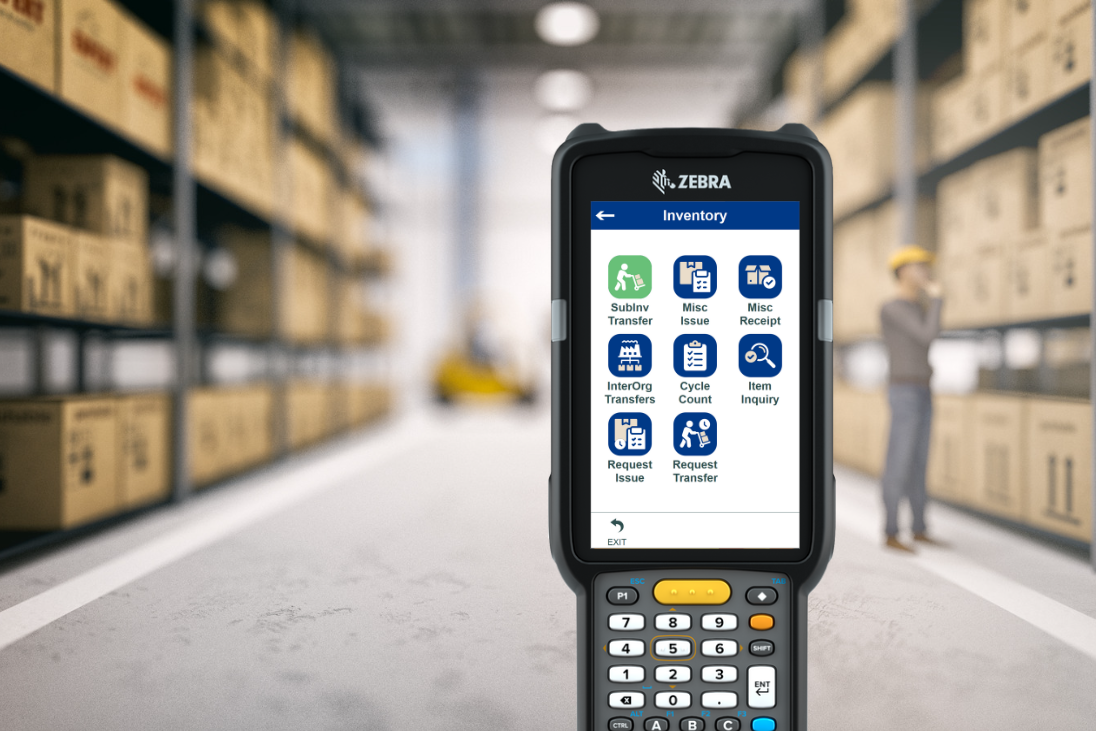Reducing Inventory Costs & Maximizing Profit Margins
- Digital Transformation
- Inventory/Warehouse
The ability to control costs is critical for effective inventory management. Spend that gets out of control can signify poor operational and organizational health.
Companies that lag in technology may not be aware that their profit margins are suffering. Obsolete software and unchecked processes are often to blame.
Regaining control over your inventory can make your warehouse and shop floor more efficient. Greater efficiency helps reduce costs and improve profit margins, giving you the edge over competitors.
But how do you reduce inventory costs and maximize profit margins?
Let’s explore some proven strategies to help you turn ballooning overhead costs into greater profit and ROI.
Cutting Costs: Strategies for Reducing Inventory Costs
1. Optimize Your Supply Chain
Optimizing your supply chain is the number one proven method of reducing inventory costs and staying competitive. Optimization requires taking a close look at your existing processes and technology. Often, you will find room for improvement.
Some of the ways you can further optimize your supply chain include:
- Employ new technology to streamline inventory control
- Leverage software to reduce lead times and labor challenges
- Collaborate with suppliers and vendors
- Improve communication across the supply chain

How Asset Tracking Enhances Operations and Boosts ROI
READ NOW »2. Regularly Monitor and Analyze Inventory Levels
Keeping a close eye on inventory levels and using data analytics can help you identify trends and optimize stock levels, reducing excess inventory and associated costs.
According to the Digital Inventory Report, 44% of companies consider overstocking and understocking a persistent challenge. Understocking leads to stockouts and a production line waiting for inputs—not to mention customers waiting on their orders. Meanwhile, excess overstocking becomes a cost sieve.
Carrying costs can account for up to 30% of total inventory value. Therefore, it’s vital to optimize on-hand inventory levels to minimize depreciation and old stock that will never be used or sold.
Software built for the purpose comes into play here. For instance, mobile inventory solutions enable businesses to track inventory data accurately and effortlessly, ultimately lowering costs.
3. Improve Demand Forecasting
Accurate demand forecasting allows you to anticipate sales and adjust inventory levels accordingly, preventing overstocking and reducing carrying costs. As with monitoring stock levels, forecasting demand requires reliable data to make informed projections.
Mobile data collection systems have consistently proved their necessity in this area, improving accuracy to 99.9% or higher.
By collecting and analyzing accurate historical sales data and other relevant factors, your business can plan more effectively and cut out unwanted overhead costs.
4. Implement Just-In-Time Inventory Management
Just-in-time inventory management is a “lean” approach that involves ordering and receiving stock in lockstep with demand, reducing the need for extensive storage and minimizing carrying costs.
Mobile inventory software can help businesses implement this strategy by providing real-time inventory visibility and enabling efficient order processing. With timely and accurate information at their fingertips, organizations can make better decisions about when to order and how much stock to maintain, leading to significant cost savings.

How JIT distributor Myers Tire Supply reduced handling time by 50%
READ THE FULL STORY »5. Consider Crossdocking
Crossdocking is a logistics strategy in which products are transferred directly from the inbound dock to outbound transportation, bypassing the need for storage in a warehouse. It also adds a new level of efficiency by eliminating the extra time and effort required to process, store, and locate the materials for outgoing orders. The savings are self-evident.
The tricky part with crossdocking is having the technological means to implement it. Advanced mobile inventory solutions can help. Since crossdocking relies on the accurate tracking of materials in every stage of the supply chain, a mobile software platform that enables accurate real-time tracking is key to a crossdocking strategy.
6. Leverage Dropshipping
Dropshipping enables retailers to fulfill customer orders directly from suppliers, reducing the need to maintain inventory and associated costs. In certain cases, this can be ideal. But this operational “shortcut” may not be viable for every industry.
In dropshipping, the retailer does not keep inventory. Instead, they forward customer orders directly to the supplier or manufacturer. The supplier is then responsible for packaging and shipping the product directly to the end customer. This eliminates the need for the retailer to maintain stock or handle shipping, reducing storage and inventory management costs.
Boosting Profits: Strategies for Lifting Profit Margins
1. Streamline Warehouse Operations
Reducing operational inefficiencies is a surefire way to lower expenses, allowing you to allocate resources to more profitable activities.
Take the time to assess your current warehouse operations to identify possible bottlenecks. Even relatively simple changes can improve the efficiency of material flows.
Likewise, software that assists workers in doing their jobs can improve productivity. For example, a mobile app that lets employees locate an item saves them from having to spend time searching for it by hand.

Trimming Labor Costs and Unleashing Warehouse Efficiency
READ NOW »2. Invest in Automation
Automation can help improve efficiency and reduce labor costs. Mobile barcoding software plays a vital role in this process by automating manual processes, from putaway to picking.
Mobile apps facilitate advanced inventory control as well, such as multi-order picking, easy returns to inventory, elevated throughput, and real-time visibility—while acting as a force multiplier for your existing staff.
In short, equipping your teams with enterprise mobility enables your operation to do more with less. The ideal solution blends advanced barcode scanning, mobile apps, and automated data collection will deliver the best ROI.
Regardless of the solution you choose, automating repetitive and time-consuming tasks can free up valuable resources to focus on more strategic initiatives that drive growth and profitability.

The Comprehensive Guide to Mobile Inventory Management Systems
READ NOW »3. Optimize Pricing Strategies
Regularly reviewing and adjusting your pricing strategies is essential to maximizing profits and remaining competitive. Analyzing factors like market demand, competitor pricing, and cost structure can help businesses determine the optimal pricing for their products.
4. Enhance Product Offerings
Expanding and diversifying your product offerings is another standard strategy for increasing revenue. Examining market gaps and customer preferences can lead to opportunities to introduce new products or enhance existing ones to better cater to buyers.
Collecting accurate warehouse information may be necessary to make data-driven decisions when expanding product lines. This means ensuring that data collection practices are up to par.
5. Focus on Customer Retention
Fostering customer loyalty through excellent service and personalized experiences continues to be one of the best ways to drive repeat business. Repeat business requires significantly fewer resources than seeking out new business. Keeping customers therefore becomes an obvious path to generate profit.
Customer retention necessitates building strong relationships. Take the time to understand their needs and help them break down roadblocks.
Another crucial tactic to keep customers coming back is to deliver what you promise, when you promise to deliver it. Delays, subpar quality, and wrong orders erode customer trust. Failure to follow through enough times and the customer may go elsewhere—even to a competitor.
Investing in technology that can help you efficiently receive and fulfill orders becomes critical. Mobile inventory, for instance, fills that role as well, greatly accelerating inventory processes and ensuring perfect orders to help you keep your customers satisfied.
Position Your Company for Success
Reducing inventory costs and improving profit margins are essential for business success in a competitive landscape, especially as the economy tightens. By refining your supply chain and inventory processes, overall offering, and improving customer service, you can reduce overhead spend and keep customers coming back. All of these methods contribute to higher profit margins, setting your business on a path to prosperity.
Don’t let inventory costs weigh your business down or let profit margins slip through your fingers. By adopting one or more of these proven strategies, you can take control of your inventory costs and boost your profit margins, positioning your business for lasting success in a competitive market.
Frequently Asked Questions
Streamlining warehouse operations, investing in automation, optimizing pricing strategies, enhancing product offerings, and focusing on customer retention are all effective strategies for improving profit margins.
Employ new technology to streamline inventory control, leverage software to reduce lead times and labor challenges, collaborate with suppliers and vendors, and improve communication across the supply chain. These techniques can help you streamline your supply chain and reduce lead times, ultimately lowering inventory costs.
Just-in-time (JIT) inventory management reduces the need for extensive storage and minimizes carrying costs by ordering and receiving stock as needed. JIT inventory management relies on precise alignment with demand forecasting between suppliers, manufacturers, and retailers.
Accurate demand forecasting allows you to anticipate sales and adjust inventory levels accordingly, preventing overstocking and reducing carrying costs, which contributes to improved profit margins.
Cross-docking enables rapid inventory turnaround by allowing inbound products to be transferred directly to outbound transportation. Significant time and money are saved by eliminating the need for put away, storage costs, and retrieval, as well as the labor required to execute those actions. Orders can be sent with greater agility and customers receive orders more quickly.
Dropshipping enables retailers to fulfill customer orders directly from suppliers, reducing the need to maintain inventory and associated costs.




